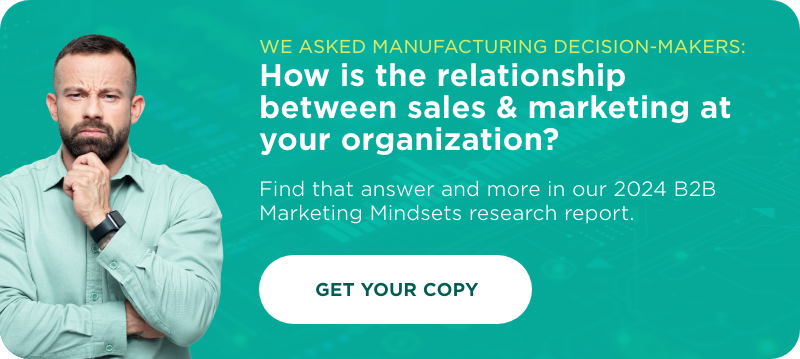How to boost your ecommerce conversion rate and grow your business.
Ecommerce businesses have two primary ways of growing their business: they can grow traffic to their website, or they can increase the percentage of visitors who make a purchase—otherwise known as their “conversion rate.”
Of course, these two strategies are not mutually exclusive, and given that many ecommerce conversion rate strategies are good for SEO, they often play into each other. Still, if you’re knowing a healthy traffic volume to your site but are struggling to convert those visitors to customers, it may be time to rethink your approach. Here are twelve tried-and-true methods to boost your ecommerce conversion rate and grow your business.
1. Write thorough product descriptions.
Don’t leave your product descriptions blank! And don’t fill them with copy/paste information either. Writing unique descriptions for every product can be time consuming, but it’s worth it.
Online clothing retailer ModCloth has done exceptionally well in this area by giving all their products quirky names and writing descriptions to match.
Their products also include all relevant product information, as well as detailed, user-generated descriptions of fit and quality. Their images are also noteworthy, which brings us to the next point…
2. Use professional images for your products.
Details matter. Not just in the description, but in your pictures. If you have a product with special features, include high-quality close-ups of every part of your design. This is especially crucial for ecommerce, as your product images must essentially replace the experience of physically handling a product in store.
But there are some great advantages to this, as well! Detail shots help draw attention to some of the finer features of your product that visitors might otherwise overlook. That hand-stitched detail in your line of men’s dress shoes? A customer in a store may not notice as they’re browsing other products. But online, they’re looking for reasons to justify their purchase, so they’ll pay extra attention to your product shots. Use their attention wisely.
3. Include a product video.
Don’t stop at images! If you have the resources to film a product video, it will be time well-spent. These can be as simple as tutorials to show off the features of a tool or appliance, or they can be short clips modeling garments.
If your ecommerce business is built around services rather than products, or if your product is less tangible, such as a computer program, you can still create a tutorial video or a short film talking about what your service provides.
4. Create a product catalog with filters and search options.
Some ecommerce businesses only offer one or two products. But many have expanded to include dozens—if not thousands—of individual products. With so many options on hand, catalog filters are essential.
This is where your choice of ecommerce platform can come back to haunt you. Some platforms only allow for a set grouping of common filters, such as size. But what if you want a whole list of filters, such as product color, material, style, price, or brand? And what if you want your user to select multiple filters? Some closed-source ecommerce platforms only offer a limited selection of filters, so make sure to research your options and sure your platform can support the level of customization you need.
5. Design prominent “add to cart” and “checkout” buttons.
There’s nothing worse than landing on a product page and not being able to find the “add to cart button.” I’m here to buy something—why are you making this so hard?!
Contrary to what you might think, large, prominent checkout buttons aren’t “tacky.” I mean, they can be, if you make them red and flashy and include sound effects when the user hovers over them with their mouse.
But a large button that fits in with the color scheme of the site is actually a benefit. It makes it easier for users to locate, and the large size is an aid to accessibility, especially for elderly users or those with motor control problems who might otherwise struggle to click a small button.
6. Introduce a “tripwire” product.
In marketing, a tripwire is a small product or offer that is such a good deal that many visitors find it hard to resist. With such a low barrier-to-entry, they make a purchase without giving it a second thought.
The great thing about a tripwire is that, while that first purchase may be minimal, it helps you earn their trust. Once they’ve experienced your product, you can follow up with more targeted marketing, and stand a better chance of winning them over.
For example, the Dollar Shave Club has mastered the art of the tripwire. Their starter box costs just $5, and includes a razor handle, four razor cartridges, and a few other sample products. If you’re already low on razors and were just about to stock up, that deal is cheaper and more convenient than most you’d find at the store.
And after you become a customer, all that’s left is to convince to not to cancel your subscription. Since it’s always easier to convince someone to do nothing rather than something, that’s an easy sell.
7. Show related products.
Here’s a classic one: “Customers who purchased this also purchased…” Most of us are familiar with this technique on Amazon, but it’s something almost all ecommerce businesses can benefit from (assuming they have enough products).
For instance, if you’re looking at products at Rifle Paper Co., they include a list of related products in the footer of their product pages.
These recommendations draw from several product categories, but are designed to work together. Nothing in their recommendation looks out of place, so if you’re already considering one product, these others can be quite tempting…
8. Review your checkout process.
Probably the most critical aspect of ecommerce conversion rate optimization lies in the checkout process. Don’t take any step of this for granted. Online shoppers will take almost any excuse to abandon their products and walk away, so think carefully before you add any barriers to their purchasing process.
A few common ways to improve this process:
- Show shopping cart contents. And let users edit them. It’s frustrating to get to the end of your checkout process, realize you accidentally added two of one item, and not have an easy way to remove the spare.
- Add a guest checkout. Some people don’t want to be bothered with creating a user account. Guest checkouts can get around that issue, especially for users who strongly intend to only make one purchase.
- Include trust signals in your checkout process. You need SLL encryption—if you don’t, you could be liable for stolen data. But other trust signals include icons of accepted payment methods, or symbols that show other security measures you have in place.
- Remove complex forms. Don’t ask for any information you don’t absolutely need. If you want to gain some extra marketing info, wait till after they’ve placed their purchase. Once the order is submitted, then you can ask them to sign up to your newsletter for more updates.
9. Offer free shipping.
Like it or not, free shipping has become the standard for online businesses, especially if you’re offering something buyers could purchase elsewhere. More importantly, it takes away a significant psychological barrier most people have with online shopping.
Paying for shipping is a tough thing for most visitors to swallow, because it’s an added expense with minimal value. Sure, it gets delivered to their door, but the convenience of home delivery is usually off-set by the wait.
Fortunately, free shipping gives you another edge: people like the word “free.” So even though free shipping has become a standard, they still feel like they’re getting a deal when they see it.
10. Don’t skimp on your customer returns policy.
Speaking of free shipping, you should have free shipping on returns, too. In fact, your returns policy should be as painless and accommodating as possible: give them a full 30 days, send them a pre-paid shipping label, don’t make it a hassle.
The truth is, most customers won’t use your returns policy, but they need to know it’s there. And advertising a generous policy most of your customers won’t use is good PR.
As for those who do use your returns policy, it’s important to remember that they’re already dissatisfied. Your primary concern should be salvaging the relationship. You won’t do yourself any favors if, after receiving a product they’re unhappy with, they also have to deal with a messy returns policy.
11. Remarket to cart abandoners.
Online shoppers abandon their carts. A lot. It’s not that they don’t like their products, it’s just that they spend more time window shopping. And it’s easier to add a bunch of things to a cart to get a sum total than to try to add up their potential shopping bill by hand.
But even though visitors may walk away from their carts, it doesn’t mean they’re walking away from your business. Instead, they’ve already shown that they’re highly interested in your products—you just have to get them over that final hurdle.
If your cart abandoners have created user profiles, fantastic! You can use automated marketing software to send them a reminder email that they left a few items unpurchased. If not, a marketing cookie can help you target interested customers with display ads even after they leave your site.
Be careful with this technique, however. If you use a marketing cookie, you will need to follow GDPR compliance to ensure you’re treating visitor information respectfully.
12. Encourage customer reviews.
Do you know what customers love? Knowing they’re not alone. When they see other customers have made purchases and left reviews, it makes them more confident in their own decision.
Furthermore, those reviews are what’s called “social proof.” They’re a clear demonstration that others have enjoyed their purchases and would recommend your product to strangers. Moreover, your shoppers (rightly!) trust those reviews over your own marketing copy.
There’s only so much credibility you can earn by blowing your own trumpet. But there’s no limit to the good faith a positive review will engender in prospective customers.
Is your ecommerce conversion rate up? Time to look at your web traffic.
Now that you’ve set your house in order, it’s time to bring in more visitors. As we said at the beginning, your best strategy will always be to target both these factors as you grow your business. Test and optimize your site, then increase your visitors, then look at the user data you have from your increased traffic to test and optimize further. Now that’s an unbeatable strategy.






